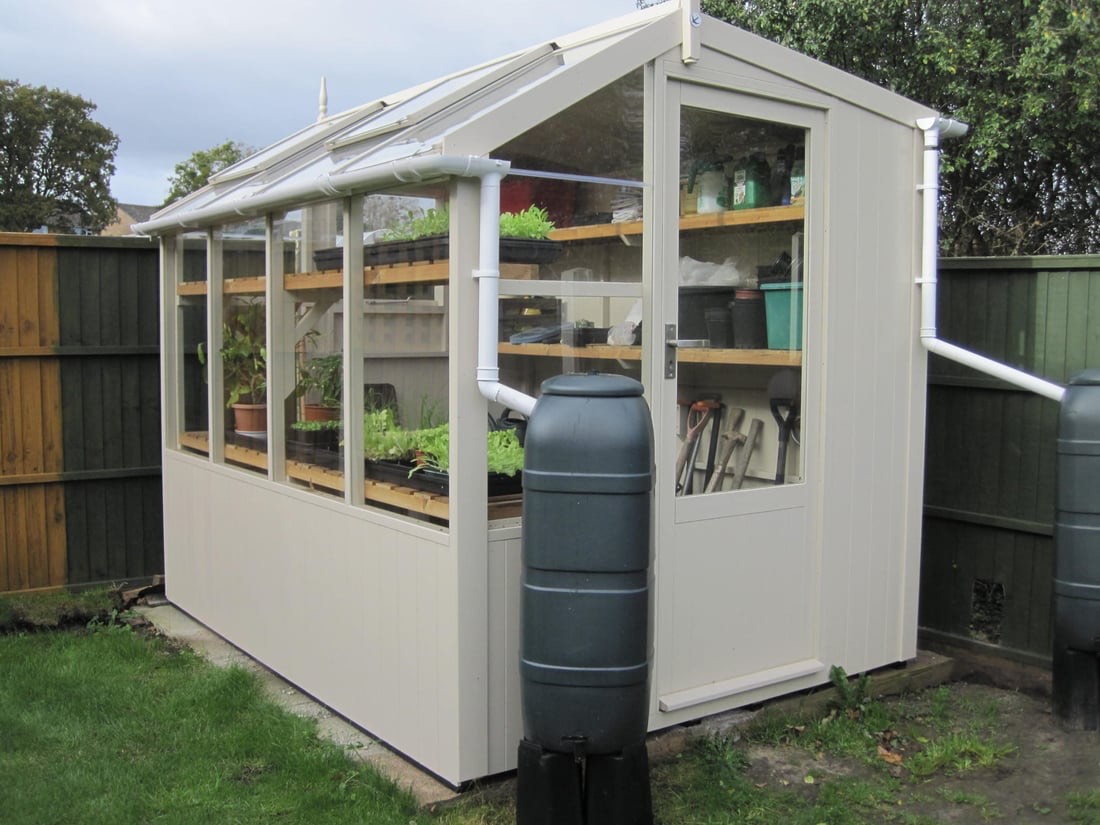Growing your own produce throughout the entire year might seem impossible given the UK’s unpredictable weather patterns. However, greenhouses UK are transforming how gardeners approach year-round cultivation, offering protection from harsh winters and extending growing seasons well beyond traditional outdoor limits.
The reality is that UK greenhouses can absolutely support year-round growing when properly managed. With the right setup, temperature control, and crop selection, you can harvest fresh vegetables, herbs, and flowers even during the coldest months. This comprehensive guide explores everything you need to know about maximizing your greenhouse potential across all four seasons.
Understanding UK Climate Challenges for Year-Round Growing
The UK experiences a temperate maritime climate with significant seasonal variations. Winter temperatures can drop below freezing, while summer brings unpredictable rainfall and occasionally intense heat. These conditions create unique challenges for continuous growing.
Average winter temperatures range from 2°C to 7°C, while summer temperatures typically reach 18°C to 25°C. The shorter daylight hours during winter months, sometimes as little as 7 hours of natural light, further complicate year-round cultivation efforts.
Greenhouses address these challenges by creating a controlled microclimate. They trap heat during sunny periods, protect plants from wind and excessive moisture, and can be supplemented with heating systems during extreme cold spells.
What Can You Grow Year-Round in UK Greenhouses?
Winter hardy vegetables thrive in unheated greenhouses throughout colder months. Leafy greens like spinach, lettuce, kale, and rocket maintain excellent growth rates even when outdoor temperatures plummet. These crops actually prefer cooler conditions and can handle light frosts.
Root vegetables such as carrots, radishes, and turnips continue producing through winter when grown in greenhouse beds. Their slower growth rate during cold periods means harvests take longer but remain perfectly viable.
Herbs represent another excellent year-round option. Parsley, chives, oregano, and thyme maintain productivity with minimal intervention. Many Mediterranean herbs actually benefit from the protection greenhouses provide against excessive winter moisture.
For those willing to invest in heating systems, tropical and subtropical crops become possible. Tomatoes, peppers, cucumbers, and aubergines can produce continuously with proper temperature management and supplemental lighting.
Temperature Management Benefits
Greenhouse temperature control offers numerous advantages for year-round growing. The structure naturally moderates temperature fluctuations, preventing the extreme swings that damage outdoor plants.
During winter, even unheated greenhouses typically maintain temperatures 5-10°C above outdoor conditions. This temperature buffer often means the difference between plant survival and death during harsh weather.
Summer benefits include protection from unexpected cold snaps and excessive heat. Proper ventilation systems prevent overheating while maintaining optimal growing conditions.
Thermal mass additions like water barrels or stone pathways help stabilize temperatures by absorbing heat during warm periods and releasing it during cooler times. This natural temperature regulation reduces the need for additional heating or cooling systems.
Extending Growing Seasons Successfully
Traditional outdoor growing seasons in the UK run from approximately March through October. Greenhouses extend this period significantly, allowing cultivation from February through November or even year-round with proper management.
Early season benefits include starting seed germination 4-6 weeks earlier than outdoor conditions would allow. This head start translates to earlier harvests and longer productive periods for annual crops.
Late season advantages involve protecting plants from first frosts, extending harvests well into autumn and early winter. Many crops that would typically finish producing in September can continue through December in greenhouse environments.
Season transition periods become smoother with greenhouse protection. Plants experience less shock when moving between growing phases, resulting in more consistent productivity and healthier specimens.
Protection from Weather Extremes
UK weather patterns include sudden storms, hail, excessive rainfall, and unexpected temperature drops. Greenhouses provide reliable protection against all these elements.
Wind protection prevents physical damage to delicate plants and reduces water loss through transpiration. This protection is particularly valuable for tall plants like tomatoes or climbing beans that might suffer wind damage outdoors.
Rain protection prevents soil waterlogging and reduces fungal disease pressure. Controlled watering allows precise moisture management, improving plant health and reducing maintenance requirements.
Hail protection saves crops from potentially devastating damage. Even small hailstones can destroy an entire outdoor crop in minutes, while greenhouse-grown plants remain completely protected.
Optimizing Light Conditions
Natural light availability varies dramatically throughout UK seasons. Summer provides up to 17 hours of daylight, while winter drops to just 7 hours. Greenhouses maximize available natural light while offering opportunities for supplementation.
Glass or polycarbonate panels allow maximum light transmission during short winter days. Proper greenhouse positioning with south-facing orientation captures optimal solar energy throughout the year.
Supplemental LED grow lights can extend effective daylight hours during winter months. These energy-efficient systems provide specific light spectrums that support photosynthesis and healthy plant development.
Reflective materials installed on north-facing walls increase light availability by bouncing natural light back toward growing areas. This simple modification can improve light levels by 15-20% without additional energy costs.
Frequently Asked Questions About Year-Round Greenhouse Growing
Can you grow tropical plants year-round in UK greenhouses? Yes, tropical plants can thrive with proper heating and humidity control. Minimum temperatures should remain above 15°C for most tropical species, requiring supplemental heating during winter months.
What vegetables grow best during UK winters in greenhouses? Cold-hardy vegetables like spinach, lettuce, kale, rocket, radishes, and carrots perform excellently in unheated greenhouses throughout winter. These crops actually prefer cooler temperatures and can handle light frosts.
How much does it cost to heat a greenhouse year-round? Heating costs vary based on greenhouse size, insulation quality, and desired temperatures. Small hobby greenhouses might cost £200-500 annually to maintain basic heating, while larger commercial operations require significantly higher investments.
Do greenhouses need ventilation during winter? Yes, ventilation prevents condensation buildup and maintains air circulation even during cold periods. Automatic vent openers help maintain proper airflow without losing excessive heat.
What is the ideal temperature range for year-round growing? Most vegetables thrive between 10-25°C, though specific crops have varying preferences. Cool-season crops prefer 10-18°C, while warm-season crops need 18-25°C for optimal growth.
Can you grow flowers year-round in UK greenhouses? Absolutely! Many flowering plants including cyclamen, primulas, and various bulbs produce beautiful displays throughout winter months. Annual flowers can be succession planted for continuous blooms.
How do you prevent pests in year-round greenhouses? Integrated pest management including beneficial insects, regular monitoring, and proper sanitation keeps pest populations controlled. The enclosed environment actually makes pest management easier than outdoor growing.
Making Year-Round Growing Work for You
Success with year-round greenhouse growing depends on matching crops to seasons and available resources. Start with cold-hardy vegetables during your first winter to gain experience before attempting heat-loving crops.
Proper planning ensures continuous harvests throughout the year. Succession planting at regular intervals maintains steady production rather than overwhelming harvests followed by gaps.
Investment in basic infrastructure like automatic ventilation, thermometers, and possibly heating systems pays dividends in improved growing success and reduced maintenance time.
Regular monitoring and adjustment of growing conditions ensures optimal plant health and productivity. Keep detailed records of what works best in your specific greenhouse and location.
Year-round greenhouse growing in the UK offers tremendous benefits for gardeners seeking fresh, homegrown produce throughout all seasons. With proper planning, appropriate crop selection, and basic infrastructure investments, continuous harvesting becomes not just possible but highly rewarding. The protection from weather extremes, extended growing seasons, and temperature control capabilities make greenhouses an excellent solution for ambitious UK gardeners ready to embrace twelve months of productive growing.


